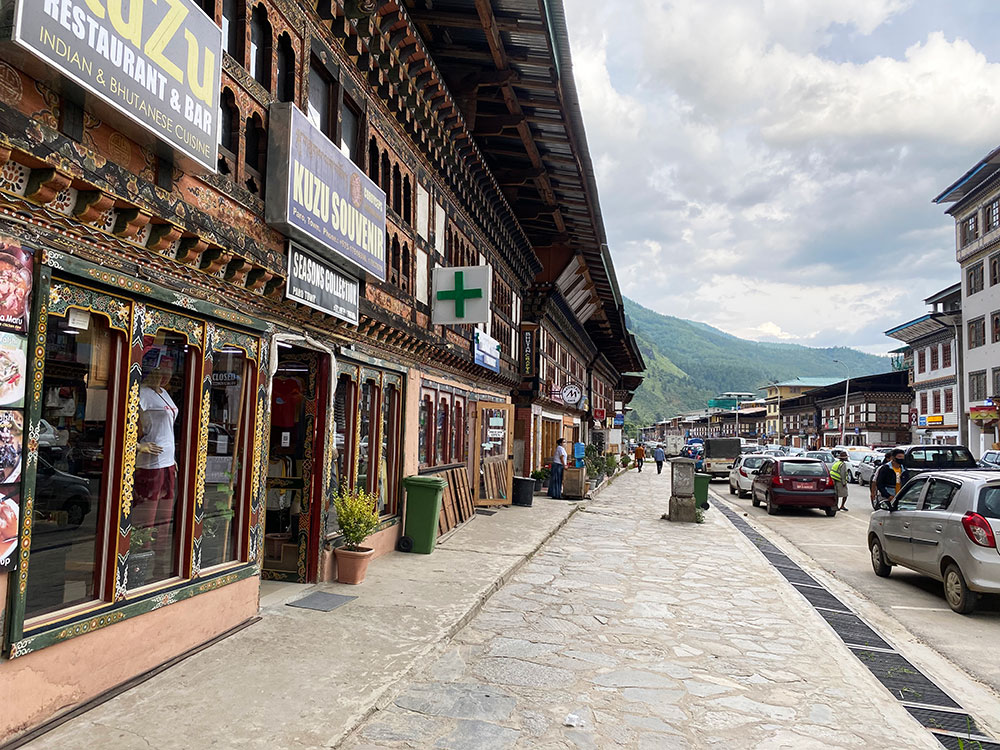… owners feel deprived of opportunity to earn more
Phub Dem | Paro
Urbanisation has taken over the landscape of Paro valley. Tall buildings and commercial centres are replacing traditional buildings in most places.
Traditional buildings in Tshongdue town, which have become a unique feature of the town, face a threat of replacement, as house owners share their concerns.
According to the landlords, rental income and valuation of the structure while availing loans was the main issue, adding that traditional structures are liabilities.
Paro thromde thuemi (representative) Deki presented the proposal from the locals to either demolish the traditional structures or provide incentives to the landowners in Tshongdue town during Dzongkhag Tshogdu (DT) yesterday.
She said that the house owners have been protecting and preserving the traditional structure for a long time. However, the landlords now want to demolish the design and build concrete structures to tap the increasing rental demand.
These landowners with limited income are paying similar taxes and fees without any exemption.
It has been more than 50 years since Rinchen Khandu’s family built their house at Tshongdue. The house is worn out and in dire need of maintenance.
More than anything, he was worried about fire accidents and other natural disasters.
“If one house catches fire, the whole area will be razed to the ground.”
As two houses are built in a plot, he said that the places were crowded and poor. “I couldn’t get approval to build structures like other structures in the town.”
Rinchen Khandu said that except for the handicraft shops that fetch Nu 50,000, rental apartments wouldn’t even fetch Nu 10,000 due to lack of facilities. “There is no balcony, no proper toilets and other amenities.”
While other parts of the town earn Nu 500,000 rental income, he said that around 100 houses struggle to find residents. “Even in the same town, we are deprived of such opportunities. If possible, our request is to allow concrete buildings.”
However, these traditional houses have become critical to the unique identity of the town.
DT Chairperson Tshering Dorji said that as an international gateway, it was the responsibility of the dzongkhag to present the unique landscape of the country to both visitors and locals. “But these individuals are deprived of attractive income and loan facilities.”
Wangchang Gup Kuenzang Rinzin argues that people do not expect the town to be filled with traditional structures like gewogs. He said that gewogs were identified as traditional zones to preserve ancient architecture.
Without uniform and traditional features such as modern doors, staircases, windows and shop’s decoration, he said that the very concept of the conventional structure was lost. “If the town is kept as a traditional zone, then gewogs should allow constructing a five-storey building.”
He said: “House owners are expecting incentives if the town area should be kept as a traditional zone.”
Considering the growing pressure on the limited infrastructure and issues with proper planning, some local leaders were of the stand that it was high time Paro function as a thromde
Emphasising the importance of traditional landscape, DT resolved to write to the Ministry of Works and Human Settlements to frame proper town planning and explore incentives for traditional building owners.
Edited by Tshering Palden


